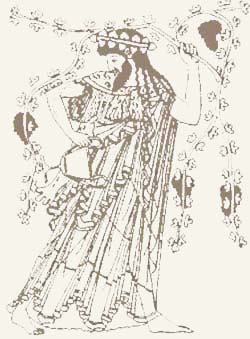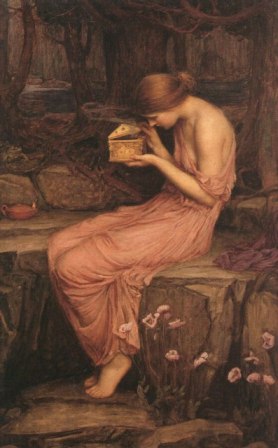The Grapevine Art & Soul Salon

On Naming The Grapevine Art & Soul Salon
The grapevine image comes from its evocation of Greek Dionysos, known as "the loosener" (god of wine and theater, women and other soulful subjects like being torn to pieces, dying and resurrection). It also has a more localized association with news and gossip. We say I heard it on the grapevine, referring to rumor, advance news of interest to the community, sometimes scandal, always a dramatic story or piece of a story, circulating, making the rounds, lingering on the surface even when it suggests hidden things. Our aim is to go under the surfaces and follow the hidden things to their depths.
Soul and art are containers for mystery. Art is hardly art unless it leaves something unfinished, something for the reader or viewer or listener to fill in with imagination, so there is always mystery in great art as well as in small enchantments we can find or make in everyday life. Soul, like art, has its home in the imaginal world. Both art and soul appeal to us through images, using metaphor and dramatic structure to organize complex and interesting states of mind and emotion, suggesting, as James Hillman and archetypal psychology teach, a poetic basis of the mind. Soul inspires great art that, in its going out into the world, turns back to nourish the force that brought it into being.
The perennial philosophical questions Who am I? and How shall I live in this world? haunt the human mind and heart. We try to answer them through philosophy and science as well as in art. Soul has roots in spiritual traditions, in philosophy, psychology, history and in art, especially literature, more especially in poetry. Soul is connected to science through nature. The things of nature are all containers for metaphor. The soul factor, which encompasses both human and more than human life (including the invisibles, the earth itself, and the creatures of the world, called by some aboriginals all my relatives), is important in answering these questions and gives rise to our subtitle: Musing on Being and Becoming Human.
Our implication here is that humans are born with potential for becoming more fully human and either realize that potential or not. The process has to do with soul-making. Becoming fully human means thinking heartfully and feeling mindfully. It means bathing in the river we call soul: feeling its support and sway, answering its challenges, crafting one's own soulfulness through individual artful expressions, boldly or sometimes shyly looking into the face of mystery and allowing mystery to work its magic on us.
Why salon? Well, we had in mind people arriving at The Grapevine to linger, look, listen, and generate conversation both internally (as in entertaining ideas) and then externally in meetings with friends in the actual world. By choosing conversation over argument, we opted for a creative flow of imaginative exchange. As James Hillman has said somewhere, "Imagination doesn't argue; it simply plays a different tune."
We claim not to be so pretentious or so precieux in our gatherings as were the ancestors, but we want to pay homage to the traditional notion of salon. And for those of you who know salon only as a place where hairdressers ply their trade (a worthy trade, I may add, since getting one's hair colored and shaped to one's satisfaction is of utmost importance to the serene mood needed for all sorts of creative work), here is a link to a Wikepedia article that will give you the history of salon as a social gathering for artistic presentations and discussion.

The story of soul-making can be found in the tale of Cupid (Eros) and Psyche by Apuleius and in a painting by pre-Raphaelite J. W. Waterhouse, a detail of which is on our home page. Here is the whole picture.
Love is inseparably intertwined with soul in the myth of Psyche and Eros, taken by James Hillman as the analytical model for psychology, in contrast to the Oedipus myth chosen by Freud. In Hillman's view, soul (psyche) is at the center of psychology (study of psyche or soul), and the work of the soul (soul-making) is figured in Psyche's four labors in the service of love.
In this painting, Psyche has successfully completed her fourth and last labor by retrieving from the Underworld a golden box with some of Persephone's beauty in it, required by the heavenly Aphrodite to refresh her own beauty. In a bold gesture, somewhat like Eve's eating the apple, Psyche cannot resist opening the box to try a touch of this cosmetic on herself (see above comment about the importance of the hair salon).
You can read the tale of Psyche and Eros and see more lovely illustrations at the link below. Be sure to scroll down and click on the piece from Mr. Marassa's Greek Mythology Course. For extended reading on this subject, see James Hillman's The Myth of Analysis (HarperCollins, 1992) and Daniel Joseph Polikoff's In the Image of Orpheus, RILKE: A Soul History (Chiron Publications, 2011).
Copyright 2015, Barbara Knott. All Rights Reserved.